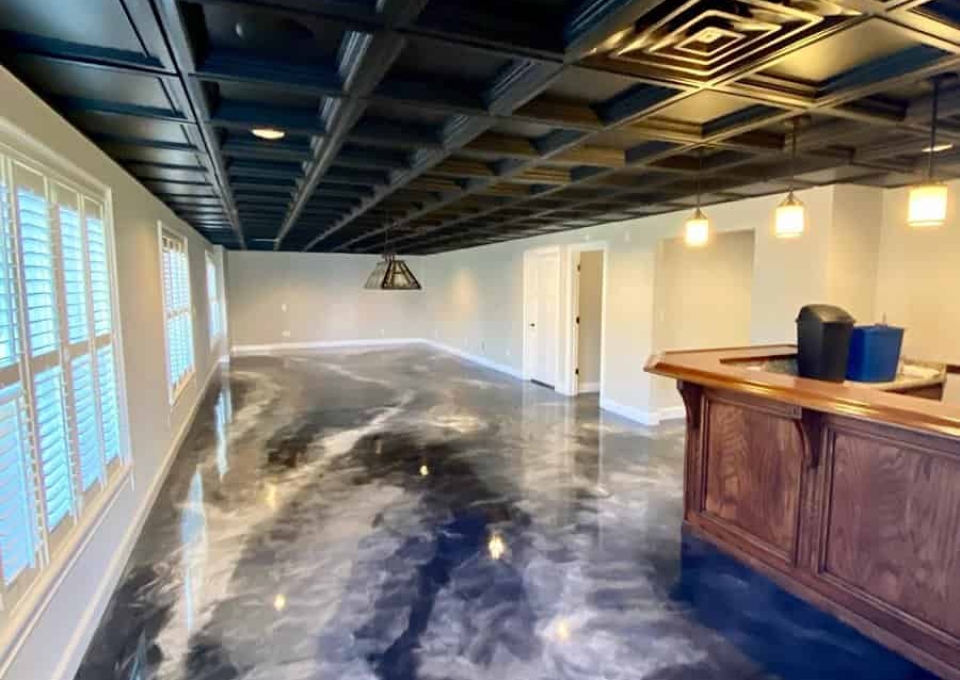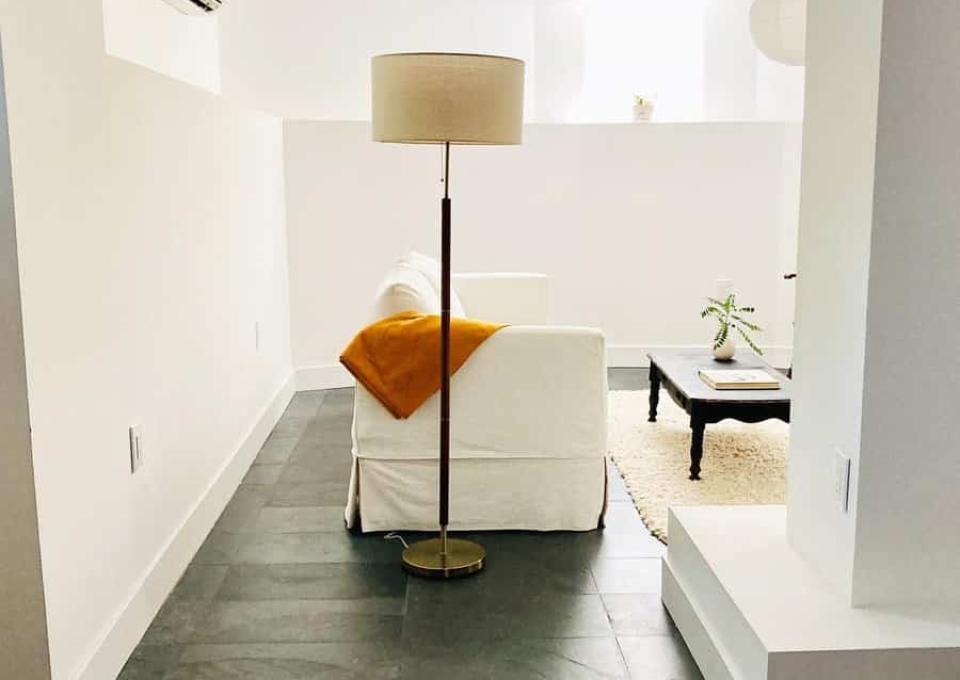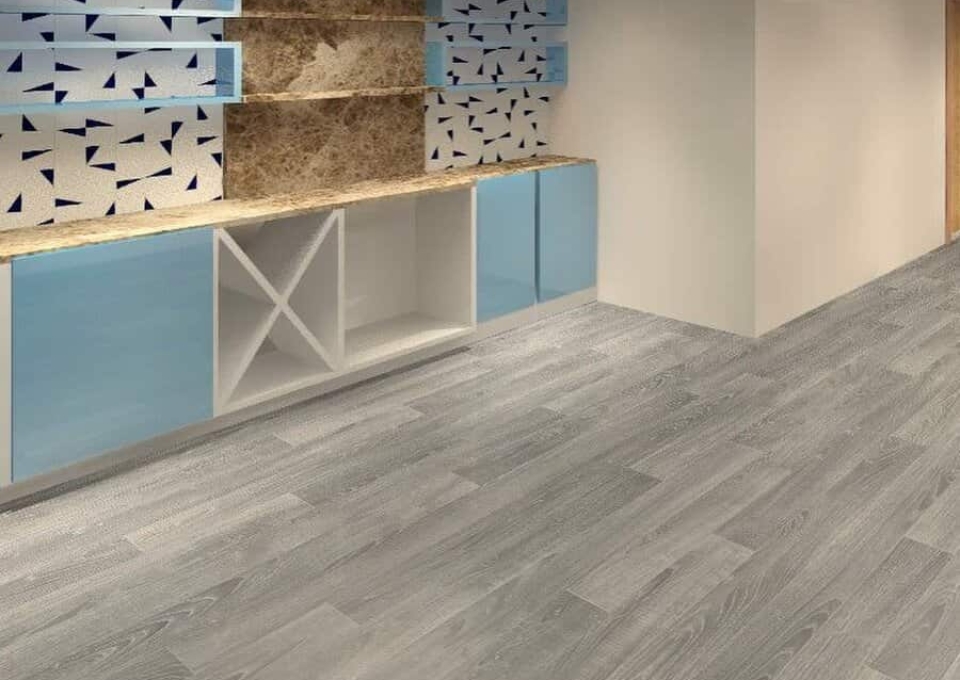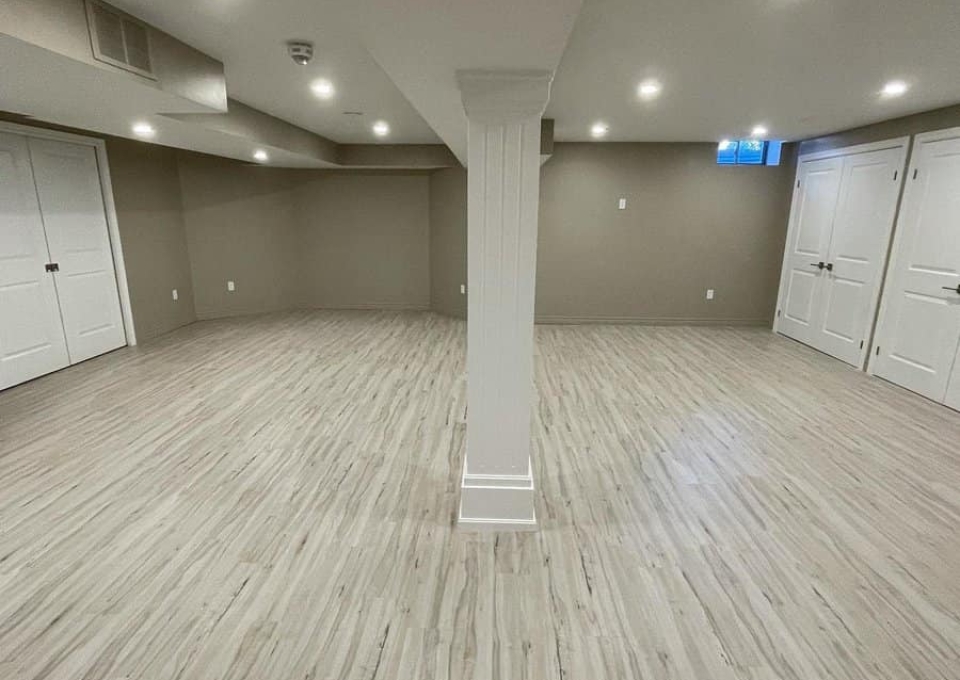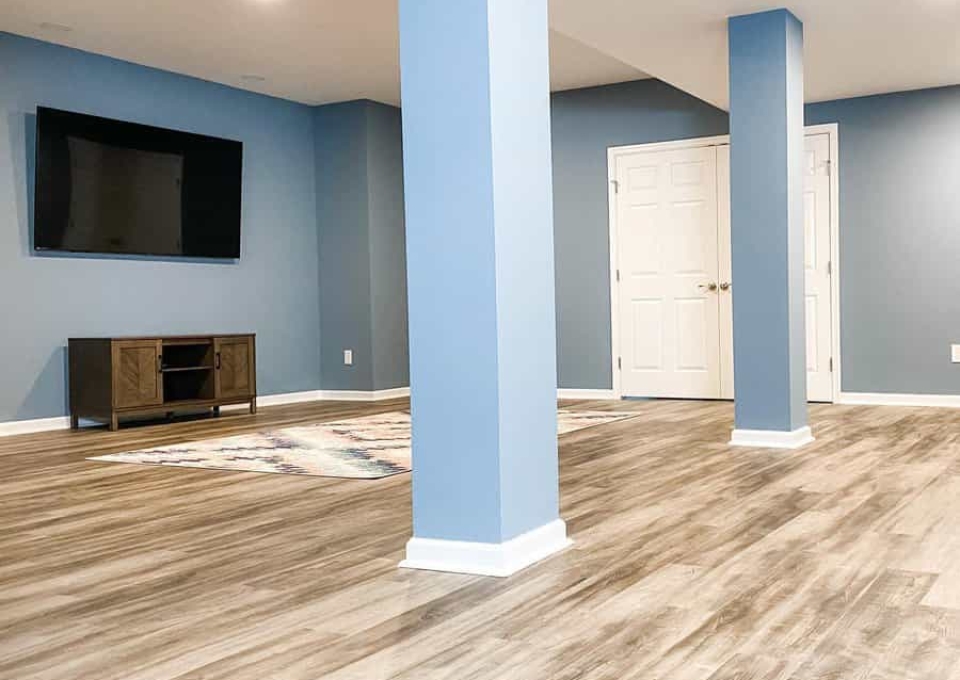Introduction to Basement Remodeling
Contents
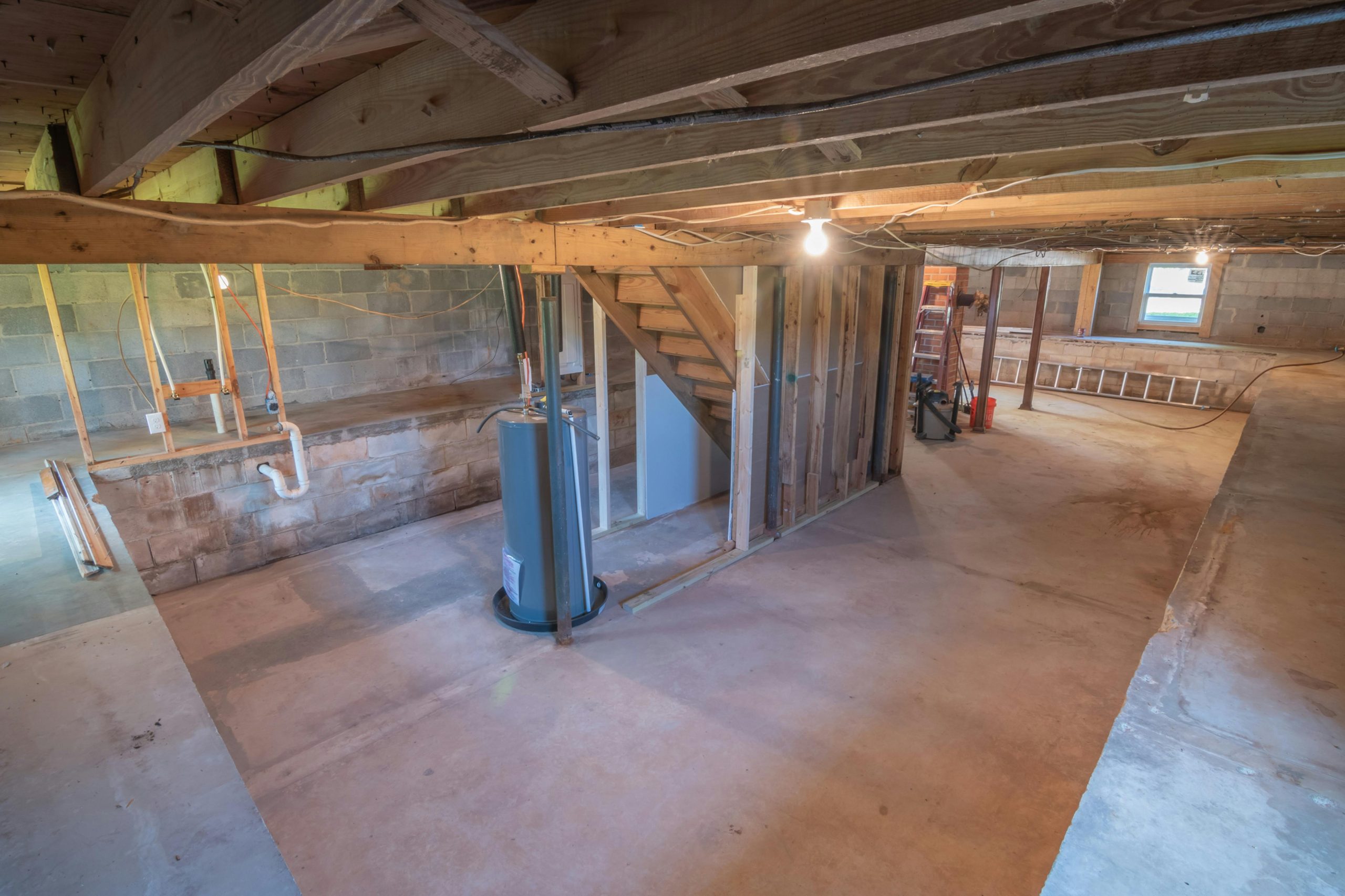
Importance of Basement Renovation
Renovating your basement can greatly boost your home’s value and usability. It’s not just about gaining extra space; it’s about improving your living environment. Whether you want a comfortable family room, a productive home office, or an exciting entertainment area, a basement renovation offers numerous possibilities.
Overview of Flooring Options
Varied flooring choices define your basement’s look and functionality. Options like engineered wood offer warmth, vinyl provides durability, and ceramic tiles bring elegance. Selecting the right flooring is essential for both the appearance and durability of your renovation.
Planning Your Basement Renovation
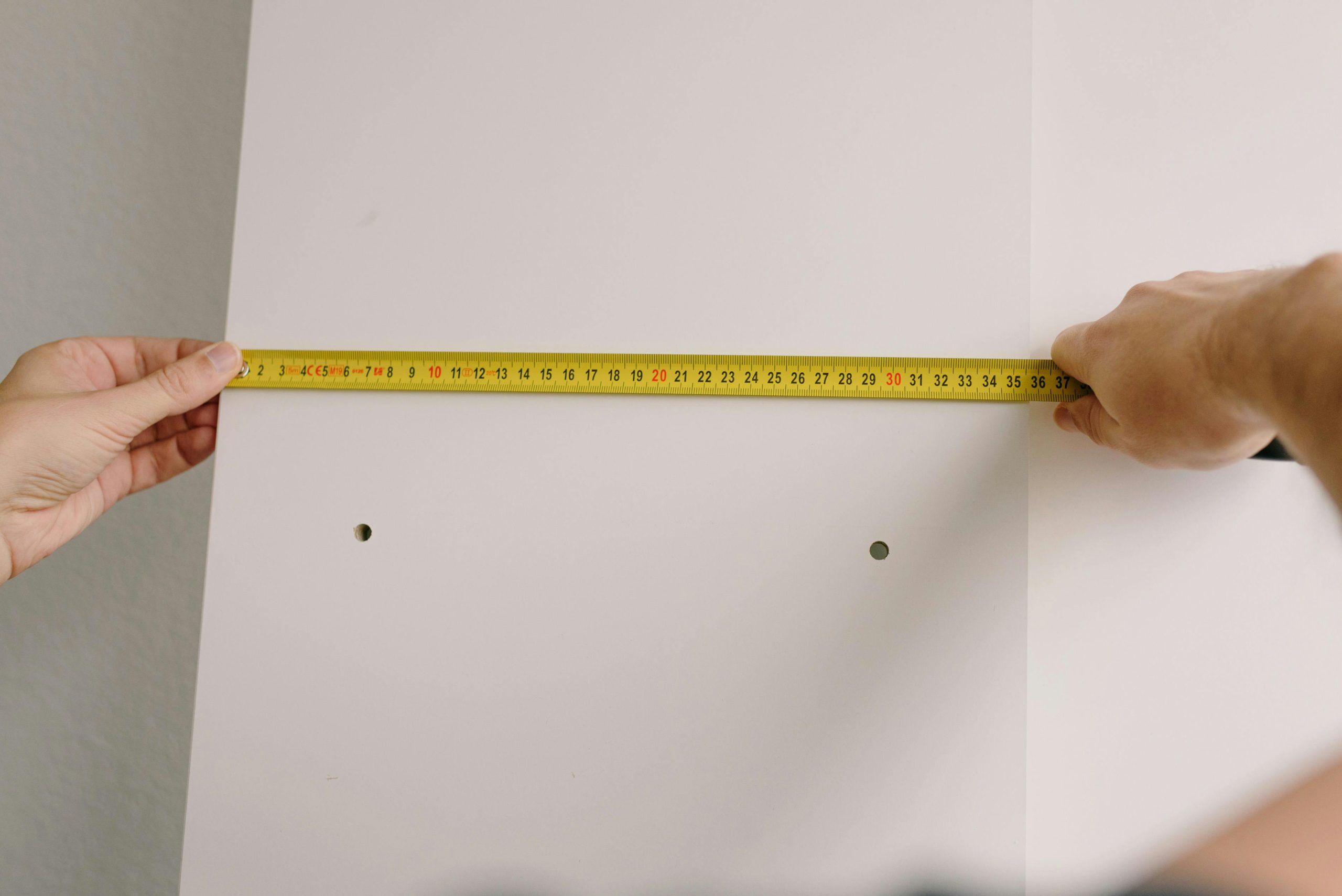
Setting Objectives for Your Basement Space
Start by determining the primary use of your renovated basement. Will it serve as a home theater, a playroom, or a guest suite? Clearly defining its purpose will inform every decision, from layout to lighting.
Budget Considerations
- Set a budget early to keep your project financially on track and prioritize essential features.
- Allocate a contingency fund for unexpected expenses that often arise during renovations.
Measuring and Assessing Your Space
Accurate measurements are essential. They affect everything from material purchases to fixture installation. Evaluate the condition of existing structures to ensure a smooth renovation. Consider professional help to identify issues like moisture or structural problems, ensuring your new flooring and design meet your practical needs.
Selecting the Best Flooring Material
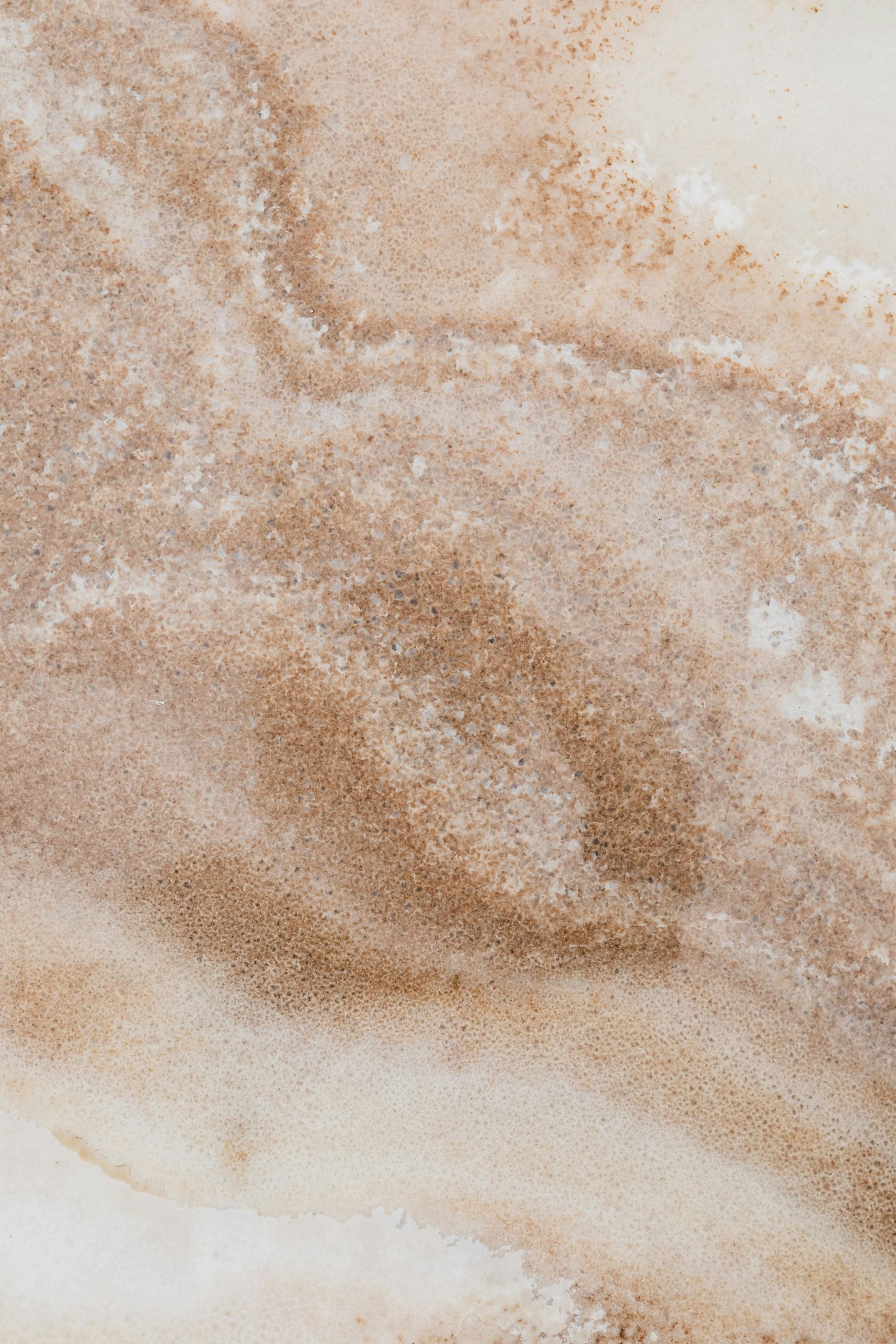
Factors to Consider
- Moisture Resistance: Basements often experience dampness. Choose materials like vinyl or ceramic tiles that handle moisture effectively.
- Durability: High-traffic areas need robust flooring. Options like epoxy or laminate are durable and easy to maintain.
- Aesthetic Appeal: The appearance of your floor is important. Whether you prefer the modern look of polished concrete or the classic feel of engineered wood, select a style that suits your space.
Comparing different flooring types shows that there is no universal solution. Each material has its advantages, balancing functionality with visual appeal, ensuring your basement is both practical and reflective of your personal style.
Advantages of Upgrading Your Basement Flooring
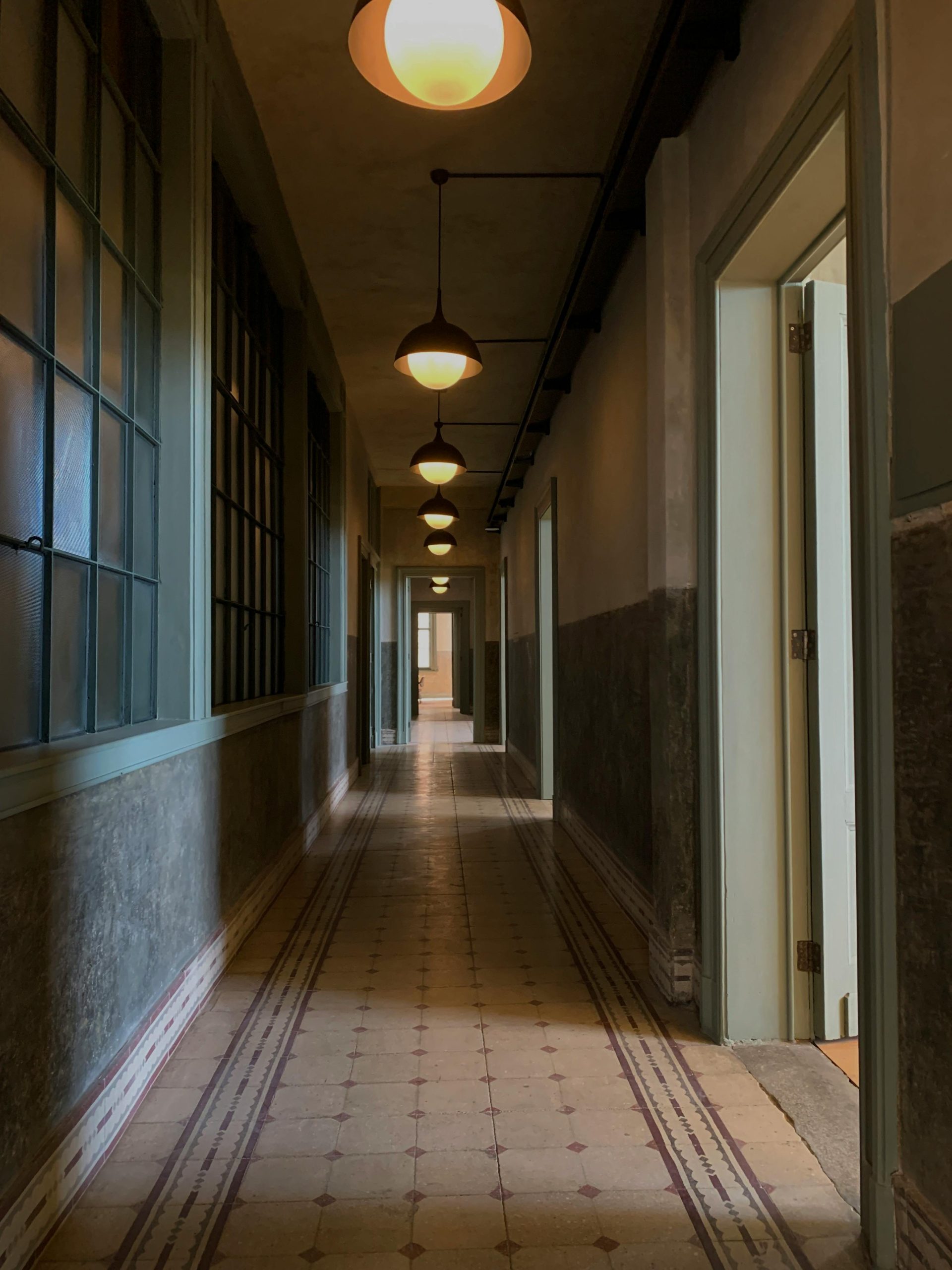
Increased Property Value
Upgrading your basement flooring can significantly enhance your home’s market value. Prospective buyers often see high-quality flooring as a valuable feature, making your property more appealing in competitive markets.
Enhanced Usability and Comfort
- Choosing the right flooring significantly improves comfort underfoot, making your basement a more inviting space for family activities or social gatherings.
- Modern flooring options provide better insulation, which can lower energy costs and increase the overall comfort of your home.
Enhanced Aesthetics
With a range of materials and designs available, new flooring can transform your basement’s look. Whether you choose the rustic appeal of wood or the modern finish of polished concrete, the right flooring can match your home’s decor and reflect your style, making your basement a functional part of your living space.
Preparation Steps Before Installing New Flooring
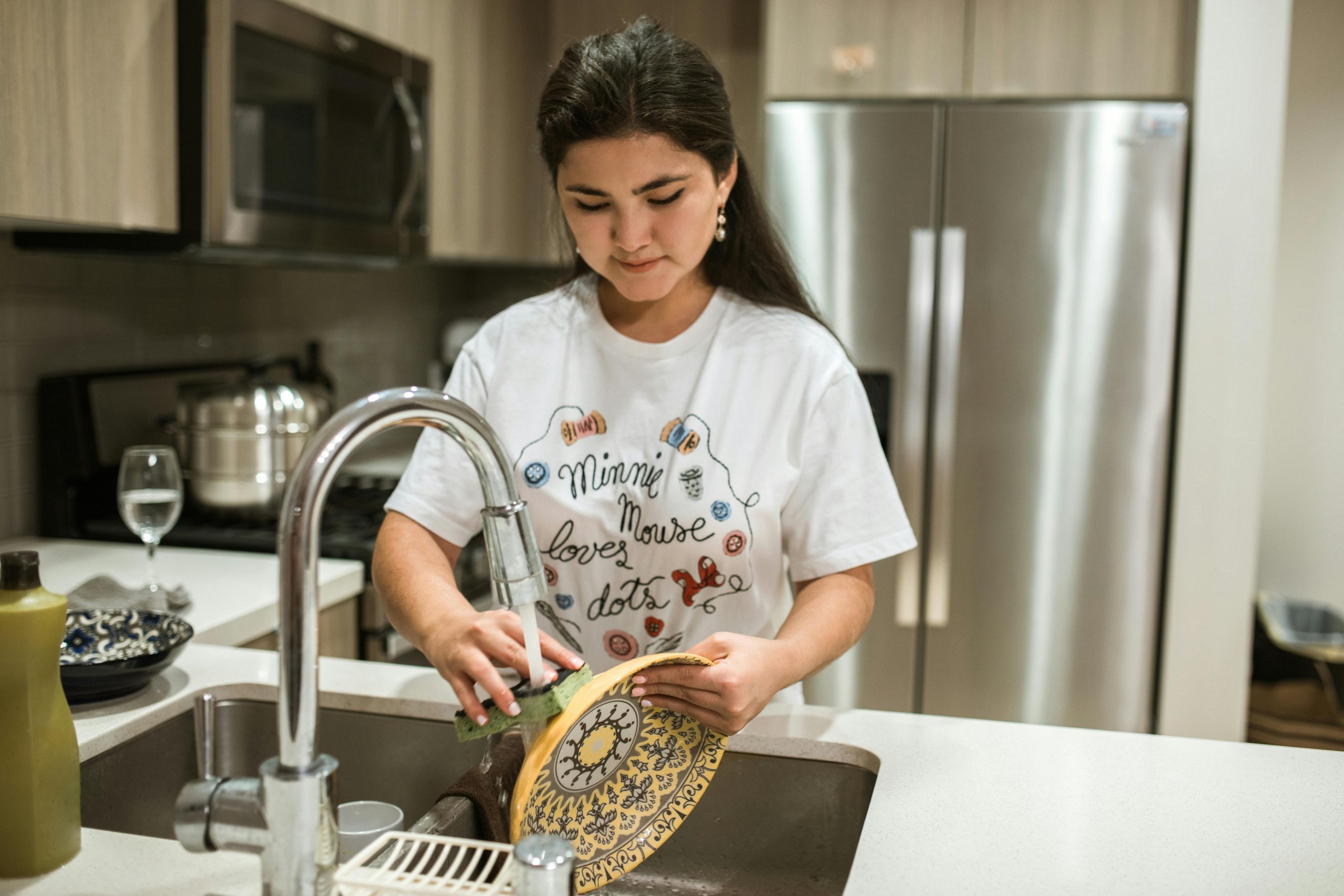
Inspecting and Preparing the Subfloor
Before installing new flooring, the subfloor needs careful attention. It should be clean, level, and dry to ensure a smooth finish. Check for moisture problems or structural issues, especially in basements where dampness is common. Addressing these problems early can save on future repair costs.
Necessary Tools and Materials
- Essential tools include a measuring tape, level, saws, and trowels, depending on your flooring choice.
- Materials may consist of adhesives, underlayment, and fasteners, tailored to the specific flooring being installed.
Hiring Professionals vs. DIY Options
Choosing between DIY and professional installation is crucial. DIY can save money for those with the right skills, but hiring professionals ensures expertise and efficiency, especially for complex tasks like waterproofing or leveling. Assess your abilities and the project’s requirements before making a decision.
Basement Flooring Design Ideas
Concrete Basement Floor Ideas
Imagine transforming your basement into a versatile design space. Concrete flooring offers robust versatility, making it an ideal choice. A polished concrete surface, with its high-gloss finish, captures and reflects light, enhancing the visual space of your basement.
Add a spectrum of color with stained concrete. Rich tones and intricate patterns can bring warmth and personality to your foundation. This isn’t just a floor; it’s the base for your creative vision.
For those who love texture, stamped concrete is perfect. It replicates stone, tile, or wood, combining durability with design. Whether you prefer industrial chic or minimalist elegance, stamped concrete can achieve the look. Maintenance is simple—just sweep and mop to keep it pristine.
Consider a home gym, an entertainment hub, or a cozy family nook—your concrete floor is the starting point for endless possibilities. It’s not only stylish but also durable, easily withstanding daily wear and tear.

- Polished Perfection – Achieve an elegant, mirror-like finish that amplifies light and space.
- Warm Hues – Opt for stains that add depth and character to your basement.
- Textured Impressions – Choose stamped patterns for a tactile experience, mimicking natural materials.
- Low Maintenance – Enjoy easy cleaning for a floor that continues to look impeccable over time.
Epoxy Basement Floor Ideas
Transform your basement with the modern appeal of epoxy flooring. Its high-gloss finish enhances the space, combining style and practicality. You can choose from a wide range of colors, from neutral earth tones to vibrant shades, to match any design preference.
For exceptional durability, consider Armor Pro Epoxy, which withstands daily wear and tear. Its seamless surface makes cleaning easy, as dirt has no place to hide; a quick sweep or mop keeps it looking new.
Conceptsinconcretepa showcases epoxy’s versatility, mimicking the look of luxurious marble or custom patterns. Totalgaragesolutions offers additional options, such as embedding decorative chips or quartz for a textured, non-slip finish.
Epoxy floors offer a practical and stylish solution for your basement.
Tiles Basement Floor Ideas
Transform your basement with durable and stylish tile flooring. Ceramic and porcelain tiles are ideal for basements due to their resilience. They resist moisture and handle heavy traffic without losing their appeal. For a luxurious touch, natural stone tiles offer unique patterns and rich textures.
Tile design options are extensive. Whether you prefer a minimalist, contemporary look or a warm, traditional feel, tiles can meet your needs. Advances in digital printing allow ceramic and porcelain tiles to mimic wood or stone, combining the beauty of natural materials with tile’s durability.
Let these curated images inspire you:
- Elegant Arrangements: Evabeeinteriordesign’s layouts showcase the power of simplicity.
- Bold Patterns: Innovationwelding’s designs demonstrate how bold choices can make a statement.
- Organic Harmony: Madelineinthegarden pairs tiles with natural elements for a serene space.
- Cohesive Decor: Microbizchick reveals how to achieve a unified aesthetic.
- Stunning Transformations: Travelwritingpro shows the impact of the right tile selection.
Choose tiles for a basement that is both durable and a reflection of your style.
Vinyl Basement Floor Ideas
Transform your basement with vinyl flooring—a perfect mix of style and functionality. Luxury vinyl planks and tiles offer the look of natural wood or stone at an affordable price. These floors are not just attractive; they are practical for creating a cozy or entertaining space.
Installation is easy with click-lock technology, making it ideal for DIY projects. Cleaning is simple; a damp mop will keep your floors looking great. Vinyl’s moisture resistance protects against basement dampness, ensuring durability.
Envision a space that suits your style—whether modern or rustic. Vinyl flooring provides longevity and low maintenance, perfect for your basement.
- Design Diversity: Choose from weathered finishes for a vintage look or sleek stains for a modern touch.
- DIY Friendly: Click-lock systems make installation straightforward.
- Low Maintenance: A quick mop keeps your floors in excellent condition.
- Moisture Resistant: Vinyl withstands basement humidity, keeping your space pristine.
Modern Basement Floor Ideas
Imagine a basement that combines style and functionality. Polished concrete floors achieve this, offering a sleek industrial look that’s durable and easy to maintain. Their glossy finish reflects minimalist design, while their toughness ensures a hassle-free experience.
Looking for a creative touch? Epoxy coatings are perfect. They protect against moisture and offer a variety of colors and patterns, from luxurious marble to charming terrazzo.
Want warmth with a clean look? Sleek tile designs are ideal. Large-format tiles in neutral tones make spaces feel larger, and their subtle textures add a touch of elegance. These options not only enhance your basement’s appeal but also withstand moisture and heavy use.
These modern flooring choices transform basements into versatile spaces for hosting, relaxing, or working. They blend form and function seamlessly.
Rustic Basement Floor Ideas
Transform your basement into a cozy sanctuary with the right flooring. Consider the character of reclaimed wood, which adds warmth and sustainability to your space. Or opt for the timeless elegance of distressed tiles, offering both durability and a nod to bygone eras.
For a unique touch, acid-stained concrete floors create a striking, mottled look, combining industrial strength with a natural patina. These flooring options are not only robust against basement conditions but also set the foundation for a rustic theme throughout your home.
Here are some practical choices:
- Reclaimed Wood: Eco-friendly and rich with history.
- Distressed Tiles: Durable, with an ageless appeal.
- Acid-Stained Concrete: Low maintenance with an organic vibe.
In Closing
Basement renovations can significantly boost your home’s value and enhance your living experience. Choosing the right flooring is crucial for ensuring both durability and visual appeal, turning your basement into a functional and welcoming area. Options like vinyl and epoxy offer practical durability, while wood and tile provide a warm, elegant look. Each material has distinct advantages suited to your basement’s specific requirements. Adopt these flooring trends to improve your living space and make your basement a key area of comfort and style in your home.
- Are there any eco-friendly basement flooring options?Bamboo, cork, and recycled rubber are eco-friendly basement flooring options that are both sustainable and suitable for below-grade installations. Bamboo is a fast-growing renewable resource that offers durability similar to traditional hardwood, while cork provides a warm, cushioned surface and has natural mold-resistant properties. Recycled rubber flooring is another green choice that is durable and provides excellent insulation and soundproofing qualities.
- Can I use carpet in my basement?Yes, carpet can be used in basements, but it's important to choose a moisture-resistant option and install a quality underpad. Carpets provide warmth and comfort underfoot, making them a popular choice for basement living spaces or playrooms. Be sure to select synthetic fibers that resist mold and mildew, and consider carpet tiles for easy replacement of damaged areas.
- How can I make my concrete basement floor more attractive?Staining, painting, or applying an epoxy coating are effective ways to enhance the appearance of a concrete basement floor. Staining can give the concrete a rich, variegated look, while painting allows for a variety of colors and stenciled designs. Epoxy coatings can add shine and come in multiple colors and patterns, including those that mimic stone or marble.
- How do I choose the right flooring for a basement gym?Rubber flooring or interlocking foam tiles are ideal for a basement gym due to their durability and shock-absorption properties. Rubber provides a sturdy, non-slip surface that can withstand heavy equipment and weights, while foam tiles offer cushioning for floor exercises and are easy to install. Consider the type of workouts you'll be doing and the equipment you'll use when selecting the thickness and material of the gym flooring.
- How do I prepare my basement floor for new flooring?Properly cleaning the existing floor, repairing any cracks or damage, and ensuring the floor is level are key steps in preparing a basement floor for new flooring. Start by thoroughly cleaning the surface to remove any dirt, grease, or debris, and then fill in any cracks or holes with a concrete patching compound. If installing tiles or planks, it's crucial to have a flat surface, so use a self-leveling compound if necessary to create an even base.
- Is it possible to install hardwood floors in a basement?Yes, it is possible to install engineered hardwood floors in a basement, but solid hardwood is generally not recommended due to moisture concerns. Engineered hardwood is constructed in layers that make it more stable and less susceptible to warping in humid conditions. Always ensure that the basement is properly waterproofed and that a moisture barrier is installed before laying down any wood flooring.
- What are some budget-friendly basement flooring ideas?Laminate flooring, peel-and-stick vinyl tiles, and concrete paint or stain are budget-friendly basement flooring ideas. Laminate is cost-effective and comes in various styles, while peel-and-stick tiles offer easy installation and low maintenance. Painting or staining concrete is an inexpensive way to improve the look without a major investment.
- What are some unique basement floor design ideas?Acid-stained concrete, decorative overlays, and custom epoxy designs are unique basement floor ideas that can create a standout look. Acid staining gives concrete a mottled, variegated appearance that is one-of-a-kind, while decorative overlays can mimic the look of stone, tile, or wood. Custom epoxy floors can include metallic finishes, intricate patterns, or even 3D visual effects for a truly unique space.
- What are the best flooring options for basements?Epoxy coatings, vinyl planks, and ceramic tiles are among the best flooring options for basements. Epoxy provides a durable and moisture-resistant surface, while vinyl planks offer a wood-like appearance with excellent water resistance. Ceramic tiles are hard-wearing and come in various designs, but they require a level subfloor and can be cold underfoot.
- What flooring should I avoid in the basement?It's best to avoid solid hardwood and carpet that isn't specifically designed for basements due to their susceptibility to moisture damage. Solid hardwood can warp and buckle with moisture fluctuations, and traditional carpets can harbor mold and mildew if they become damp. Always opt for moisture-resistant materials and consider the basement's humidity levels and potential for water intrusion when choosing flooring.

